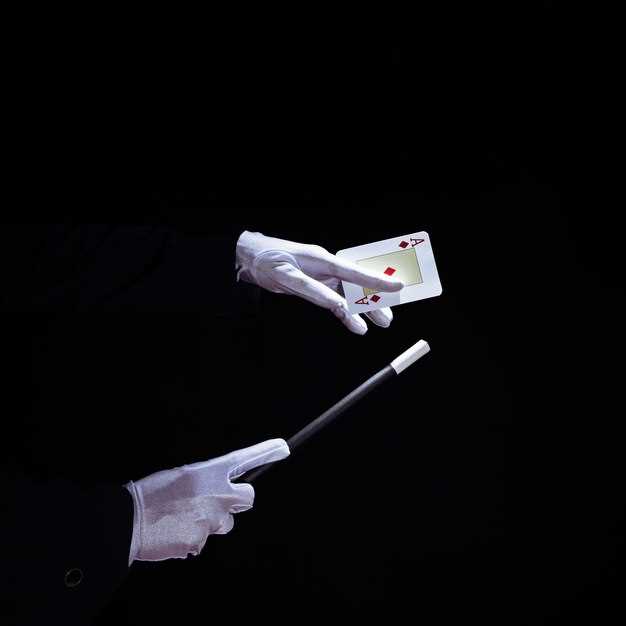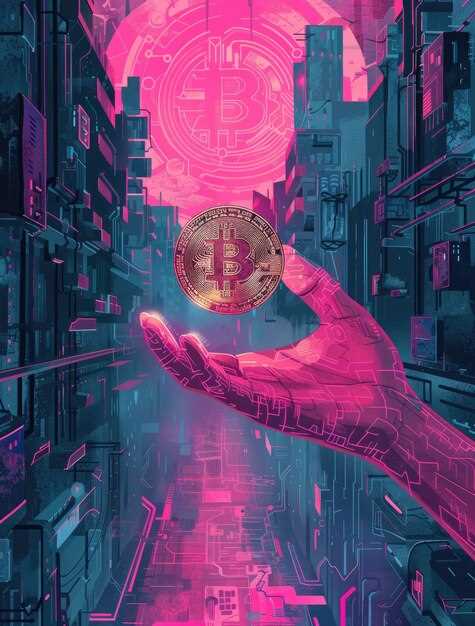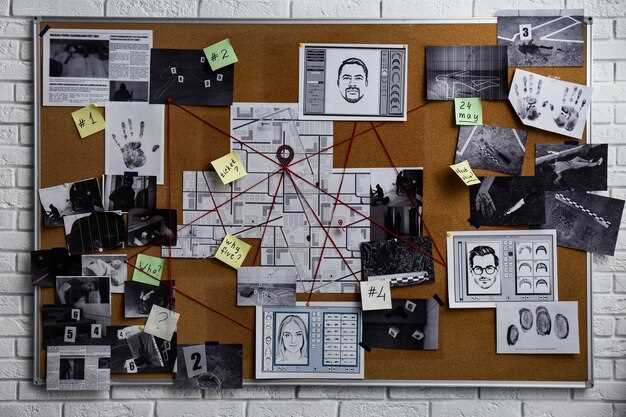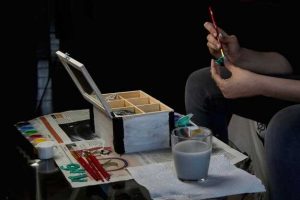Consider starting with the creation of digital art or photography that can be tokenized into NFTs. Non-fungible tokens enable artists to authenticate and sell their work in a unique way, providing a new stream of revenue that doesn’t rely solely on traditional art sales. Engaging with cryptocurrency platforms opens up opportunities to connect with collectors across the globe, allowing artists to present their work in digital galleries and online marketplaces.
Crypto art leverages blockchain technology, offering transparency and provenance tracking for every piece sold. This aspect not only builds trust among buyers but also allows creators to earn royalties from secondary sales, an advantage that physical art lacks. Understanding the use of platforms like Ethereum to mint your NFTs can significantly enhance your monetization strategy. Many artists have already witnessed exponential growth by integrating NFTs into their portfolios.
NFT photography provides a fresh avenue for photographers to reach a broader audience. By transforming photographs into NFTs, photographers can claim a space in this burgeoning market. Crafting compelling narratives around your images can elevate their perceived value, inviting collectors to invest in not just a photograph, but a unique piece of digital artistry. Utilizing social media channels to market these pieces can expand your reach and build a dedicated following who appreciate and value digital art.
Learning the intricacies of smart contracts and collaborating with reputable NFT marketplaces like OpenSea or Rarible will further boost your ability to capitalize on your digital works. These platforms offer the necessary tools and audiences to effectively market and sell your art, turning your passion into a profitable endeavor. Always remain adaptable and keep abreast of market trends to ensure you maximize every opportunity presented by the evolving digital art space.
Understanding Crypto Art as a Revenue Stream

Dive into the potential of selling limited edition digital artworks. By capping the number of editions, you can create scarcity, thus boosting their value in the eyes of collectors. This approach often leads to increased demand, which can be strategically used to set premium prices for each subsequent release.
Next, engage with platforms like OpenSea, Rarible, and SuperRare to reach a broader audience. These platforms not only offer a marketplace but also provide artists with tools to display their work effectively. Making use of social media to share your crypto artworks can drive traffic to your listings and create a community of supporters around your art.
Consider collaborating with other artists or influencers. Joint projects not only combine fanbases but can also introduce you to new techniques and ideas. Cross-promotion can exponentially increase your visibility, potentially leading to higher sales and recognition in the crypto art community.
Additionally, remain mindful of the royalty system in NFTs. Set a royalty percentage in your smart contracts so that you earn a commission every time your art is resold. This provides a continuous income stream, which is essential as your reputation and the demand for your work grows over time.
Exploring Blockchain Technology and its Role in Art Sales
Consider utilizing blockchain for certifying your art pieces. Blockchain offers an unchangeable ledger, ensuring each transaction is transparent and secure. NFTs, or non-fungible tokens, are central to this system, as they provide provable ownership and authenticity for digital art.
To enhance trust among collectors, incorporate blockchain’s tracking capabilities. You can show a comprehensive history of each piece, from creation to the current owner, which adds value and alleviates concerns regarding forgery. Smart contracts streamline this process by facilitating automatic transfers upon agreed conditions.
Evaluate various blockchain platforms based on transaction fees and community support. Ethereum, known for its extensive NFT ecosystem, may have higher costs, but Solana offers faster transactions and lower fees. Align these choices with your business strategy to maximize benefits and minimize costs.
Furthermore, embrace global marketplaces like OpenSea and Rarible to expose your art to wider audiences. These platforms provide easy access to blockchain technology, enabling seamless interaction with art buyers worldwide. By choosing the right marketplace, you not only reach more buyers but also engage in direct sales without intermediaries eating into your profits.
| Blockchain Platform | Transaction Fees | Community Size |
|---|---|---|
| Ethereum | Higher | Large |
| Solana | Lower | Growing |
Keep yourself informed with updates from the blockchain realm. As technologies evolve, they introduce new possibilities for artists to enhance their sales strategy. Platforms frequently update their protocols, which can influence both functionality and costs, thereby affecting your decision-making. Regularly review new developments to utilize their full potential effectively.
Defining Ownership: How Smart Contracts Work
To efficiently establish art ownership using NFTs, rely on smart contracts. These self-executing protocols register and enforce rules of art transactions directly on the blockchain.
Leverage Automation: Smart contracts operate without intermediaries, ensuring artists receive automatic payments once conditions are met. This reduces transaction fees and speeds up the payment process.
Ensure Transparency: All smart contract activities are recorded on the blockchain, allowing artists and collectors to verify each step of the transaction history. This ensures trust and diminishes disputes regarding ownership.
Customize Terms: Define the conditions under which art changes hands within the smart contract. This might include automatic royalties for secondary sales, guaranteeing passive income as the art appreciates.
Protect Artists’ Rights: By encoding ownership details directly, artists get precedence in maintaining their rights. Establishing clearer terms upfront avoids potential conflicts with buyers down the line.
Utilize these protocols to streamline art authentication while safeguarding interests, thus fostering a secure and efficient digital marketplace.
Platforms for Selling Crypto Art: Top Marketplaces to Consider
Start by exploring SuperRare, a premier platform for selling limited-edition and exclusive crypto art pieces. The platform’s invitation-only policy for artists ensures a high-quality roster, making it attractive to serious collectors. It provides a transparent environment with blockchain verification, allowing creators to retain royalties from secondary sales.
OpenSea stands out as the largest NFT marketplace, accommodating a vast array of digital assets, including crypto art. It’s an ideal starting point for artists seeking broad exposure and diverse clientele. With a user-friendly interface, setting up and selling your art can be a straightforward process on this platform.
Rarible offers a decentralized approach, empowering artists to mint, sell, and auction their work with customizable options. Its community governance model gives creators a voice in the platform’s evolution, and the platform’s ease of use appeals to both beginners and seasoned crypto artists.
Foundation focuses on fostering a strong community of digital artists and collectors. This marketplace employs an invite-only system to maintain quality, while encouraging innovation and creativity. With its sleek design and focus on art that challenges conventional boundaries, it’s an enticing choice for contemporary artists.
- Nifty Gateway: This platform emphasizes accessibility, allowing purchases via credit card rather than requiring cryptocurrency. Its curated drops and collaborations with high-profile creators attract a broad audience.
- KnownOrigin: Respected for its artist-friendly policies and supportive community, KnownOrigin is a reliable choice for those seeking a nurturing environment. The platform emphasizes unique, high-quality art pieces and offers distinctive features like digitally signed artworks.
- Zora: Zora offers an open protocol where artists can mint and auction NFTs without permission. It promotes creator control and long-term value through programmable pricing structures.
Selecting the right marketplace depends on your artistic goals and desired audience. Each platform offers distinct features and communities, so carefully consider which aligns best with your vision and technical comfort. Engaging with these platforms not only opens up new revenue streams but also connects you with an expansive network of digital art enthusiasts and professionals.
Pricing Strategies: How to Set and Adjust Prices for Digital Art
Begin by researching the market for similar artworks. Analyze what prices comparable digital art or NFT photography pieces are fetching. Collect data from different platforms and marketplaces to identify patterns and average price points. Consider the artist’s reputation and the uniqueness of the artwork when comparing.
Set a baseline price by factoring in your own costs, such as time spent on creation, licensing fees, and any expenses related to minting NFTs. This helps ensure that your pricing accounts for your effort and investment from the start.
Consider adopting a tiered pricing model. Offer lower entry prices for early collectors or limited editions, and progressively increase prices as demand rises. This not only builds exclusivity but encourages early purchases.
Conduct A/B testing on different platforms to experiment with varying price levels and see how consumers respond. Use insights from these tests to adjust your pricing strategy accordingly.
Monitor the market and adjust prices based on demand and trends. Dynamic pricing allows you to increase or decrease prices for your digital art in response to marketplace shifts, ensuring competitiveness and maximizing potential revenue.
Engage with your audience and gather feedback. Understanding what your audience values most about your artwork can guide you in aligning your pricing structure with consumer expectations.
Finally, consider integrating added value options, such as behind-the-scenes content or personalized experiences for buyers. Offering added value can justify higher price points and enhance buyer satisfaction.
Legal Considerations: Protecting Your Work and Intellectual Property
Ensure your art is protected by registering your work with the appropriate copyright office in your country. This formal registration secures your rights and strengthens your position in potential disputes. Additionally, employing watermarks on digital copies can deter unauthorized use while preserving your original file without them for authorized sales.
In the realm of Crypto Art and NFTs, understanding smart contracts is key. A smart contract is a self-executing contract with terms coded into the blockchain. Work with a knowledgeable blockchain developer to ensure that your smart contracts include terms protecting your resale rights and royalties.
Consider obtaining licenses for your work. This legal document grants permissions to others under agreed terms, such as how they can use your work or for how long. Custom licenses can be tailored to your needs, ensuring you retain control over how your art is distributed and used.
For collaboration projects, establish clear agreements with all parties. Outline each person’s contributions and rights over the resulting work to prevent future conflicts. Use non-disclosure agreements (NDAs) when discussing new projects to protect your ideas and ensure they aren’t used without your consent.
Stay informed about international intellectual property laws, as the digital nature of crypto art often involves cross-border transactions. Countries may have different laws regarding copyright, so understanding these differences is crucial when dealing with international buyers or collaborators.
Consult with an intellectual property lawyer who can provide specific advice tailored to your situation. This professional guidance can help you understand the complexities of the digital art world and ensure you’re fully protected.
Monetizing Artistic Vision through NFT Photography

Begin by creating a cohesive collection that tells a story through your photography. Choose a theme that resonates with potential collectors and ensures each image complements the others. A strong narrative is crucial for engaging the audience and boosting the perceived value of your NFTs.
Leverage social media platforms to build a following. Share behind-the-scenes content and engage with your audience to create a personal connection. This interaction fosters interest and loyalty, which can translate into sales when your NFTs are released.
Choose the right marketplace for your NFT photography. Platforms like OpenSea, Rarible, or Foundation offer different audiences and fee structures. Research these marketplaces to select the one that aligns best with your artistic goals.
Price your NFTs strategically. Start with accessible prices to attract initial collectors and gradually increase as your reputation and demand grow. Scarcity can also enhance value; consider limited editions or exclusive unlockable content.
Use blockchain technology to ensure the provenance and authenticity of your work. This increases trust and confidence among collectors who value unique and verifiable pieces.
Collaborate with other artists or influencers in the NFT space to expand your reach. Joint projects or shoutouts can introduce your work to new audiences and potential buyers.
Utilize analytics tools provided by NFT platforms to understand buying patterns and preferences. This data can inform future projects and pricing strategies, enhancing your ability to monetize effectively.
Maintain communication with collectors after sales. Offer exclusive previews or updates to reward loyalty and encourage repeat purchases. A satisfied collector is more likely to spread the word, increasing your visibility and credibility in the NFT community.
Choosing the Right Platform for Selling NFT Photography
Identify platforms that align with your artistic vision and audience preferences. Some platforms specialize in curated art experiences, such as SuperRare and Foundation, offering a more selective community. These platforms typically involve an application process or invitation to ensure the quality and uniqueness of the artwork. If your work benefits from a highly curated context, these platforms can showcase it effectively.
For photographers seeking broader access and lower barriers to entry, consider OpenSea and Rarible. OpenSea is one of the largest NFT marketplaces, allowing photographers to reach a vast audience without stringent selection processes. Rarible, with its decentralized model, enables photographers to maintain greater control over their sales and royalties. These platforms offer flexibility and accessibility for emerging NFT artists.
Evaluate the platform’s fee structure and understand how transaction costs affect your potential earnings. Platforms like OpenSea charge a percentage of the final sale price, while others may have additional minting fees. Consider the long-term financial implications of these costs on your business model.
Analyze the community and marketing support each platform provides. Foundation’s strong community focus might enhance networking opportunities, while OpenSea’s broader audience offers more visibility. Select a platform that supports your artistic growth with its community and marketing resources.
| Platform | Key Features | Fees |
|---|---|---|
| SuperRare | Curated, high-quality artwork | 15% commission on sales |
| OpenSea | Largest NFT marketplace, broad audience | 2.5% commission on sales |
| Foundation | Community-driven, invitation/apply only | 5% commission on sales |
| Rarible | Decentralized, artist control over royalties | 2.5% commission on sales |
Preparing Your Images: File Formats, Metadata, and Quality Considerations
Choose the right file format by opting for JPEG for its balance between quality and size, or PNG for lossless quality. For large artworks, consider TIFF for preserving every detail. Know that your choice affects storage costs and download speed for buyers.
Consider embedding metadata such as title, artist’s name, date created, and a brief description. This data not only secures intellectual property but enhances discoverability on platforms. Use tools like Adobe Bridge or free software like ExifTool to edit metadata efficiently.
- Aim for a resolution of at least 300 DPI to maintain print quality.
- Keep the color profile in sRGB to ensure consistency across devices.
- Consider compressing files without sacrificing quality to improve page load times.
Test the appearance of your images on different devices and screen sizes to ensure consistent quality. Adjust brightness and contrast if necessary, using software like Photoshop or GIMP. Ensure your work stays true to your artistic intent across all platforms.
Marketing Your NFT Photography: Building an Audience and Brand
Begin by identifying your niche. This specificity helps attract a dedicated audience genuinely interested in your work. Whether it’s urban landscapes, nature shots, or abstract photography, having a clear focus makes your art stand out.
- Utilize social media platforms: Instagram, Twitter, and Pinterest are great tools for visual artists. Share behind-the-scenes photos, processes, and finished NFTs regularly to keep your audience engaged and growing.
- Engage actively with your audience: Respond to comments, participate in discussions, and show appreciation for those supporting your work. Creating a community around your art fosters loyalty and encourages word-of-mouth promotion.
- Collaborate with other artists: Partner with NFT creators whose styles complement yours. This not only introduces your work to a broader audience but also builds meaningful connections in the NFT space.
- Participate in NFT marketplaces and forums: Platforms like OpenSea, Rarible, and Foundation allow for showcasing your NFTs. Engage in forums and communities to gain visibility and learn from other artists in the space.
- Create a strong personal brand: Consistent visual style, tone, and artist statements uniquely define you. Ensure your branding reflects your art’s essence and remains consistent across all platforms.
Consistency and authenticity are key in building a successful NFT photography brand. Engage your audience with passion and sincerity, which will naturally boost your visibility and reputation in the NFT community.
Video:

How To Make Money Collecting Crypto Art
How To Make Money Collecting Crypto Art
Q&A:
What are the first steps to start selling my art as NFTs?
To begin selling your art as NFTs, you’ll need to select a blockchain platform like Ethereum that supports NFTs. Open an account on an NFT marketplace such as OpenSea or Rarible. Then, set up a digital wallet to handle cryptocurrency transactions, ensuring it is compatible with the platform you choose. Once your wallet is funded with cryptocurrency, upload your art to the marketplace, create an NFT, and list it for sale. Be sure to set a competitive price and consider auction-style listings to attract more buyers.
How does NFT photography differ from traditional photography sales?
NFT photography transforms a digital photograph into a unique, verifiable digital asset using blockchain technology. Unlike traditional photography sales, where print limitations and physical presence were constraints, NFTs offer artists a new way to prove ownership and authenticity of their digital works, often reaching a broader audience. Another key difference is the potential for earning royalties on future sales of the NFT, allowing artists continued earnings from their work.
Are there any financial risks involved in selling art as NFTs?
Yes, selling art as NFTs involves financial risks. The value of cryptocurrencies, which are often required for transactions, can be volatile, directly impacting sale proceeds. Additionally, there can be high transaction fees and no guarantee of sales success. The market is competitive and can be unpredictable, so it’s crucial to research thoroughly and consider potential return on investment before diving into NFT sales.
Can anyone buy an NFT of my art, and what rights do they get?
Yes, anyone with access to an NFT marketplace and cryptocurrency can purchase an NFT of your art. However, buying an NFT does not automatically grant the purchaser copyright or intellectual property rights. Typically, the NFT owner gets proof of ownership of the digital asset and may have limited rights like displaying or reselling the NFT but not reproducing or commercially exploiting the art unless specified otherwise by the original artist.





